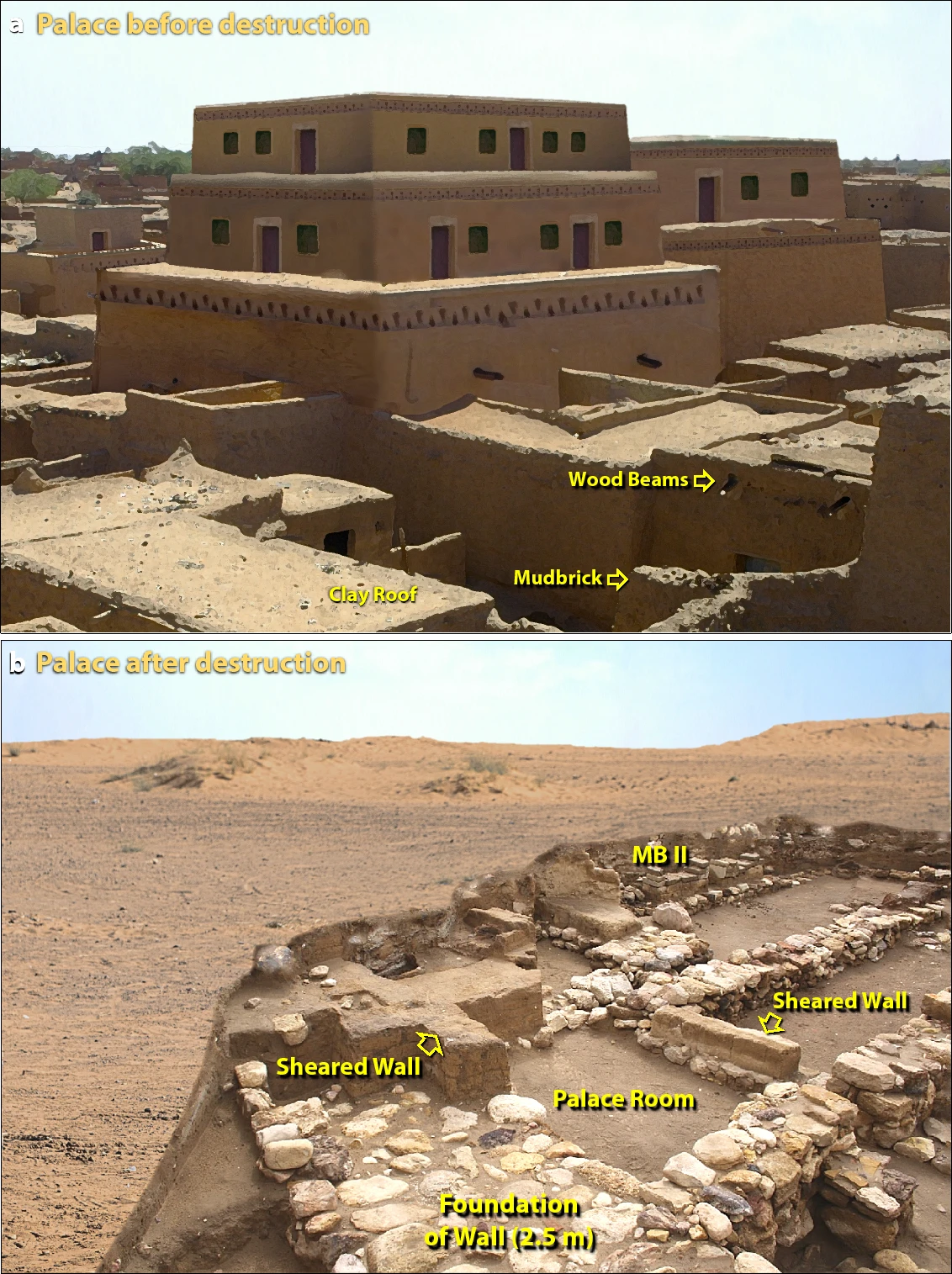Apocalypse Then
I came across THIS ARTICLE today and thought it very interesting if not particularly geological. It is a popularisation of THIS PAPER in Nature.
It concerns the total destruction of Tall el-Hammam, a Middle Bronze Age city north east of the Dead Sea, in Jordan. This occurred about 3,600 years ago and it is speculated that it may have inspired the Old Testament story of the annihilation of Sodom. There is a Lot of evidence. (Sorry!)
The site has been excavated for 15 years and is continuing. Objects found which are of interest include, pottery sherds with glassy surfaces, melted mudbrick fragments, melted building plaster. One begins to think of an extremely high temperature event.
Also the buildings did not just fall down - they were levelled. Walls were sheared off. Most of the mud bricks were pulverised and blown off the site to the north east.
Could this be signs of warfare - No. There is a complete lack of arrowheads, sling stones and spear points at the destruction layer.
The researchers did not find nanodiamonds (often found at sites of cosmic impact) but they did find diamonoid particles - the smallest unit found in the diamond crystal lattice. Shocked quartz was also found.
There is much more evidence described in the articles and they all lead to the conclusion that there was a cosmic airburst a bit bigger than the Tunguska event in Siberia in 1908.
Both articles are well worth reading. And both are free!
The comments on the first article are enlightening and entertaining. The suggestion that the Sumerians had atomic bombs but not wheels is dismissed.
Catastrophic leveling of the palace at TeH. (a) Artist’s evidence-based reconstruction of the 4-to-5-story palace that was ~ 52 m long and 27 m wide before its destruction. (b) Artist’s evidence-based reconstruction of palace site on upper tall, along with modern excavation. “MB II” marks the top of 1650-BCE Middle Bronze rubble. Note that the field around the excavation is essentially flat, unlike the view in panel ‘a’. Originally, parts of the 4-story palace were ~ 12 + m tall, but afterward, only a few courses of mudbricks remain on stone foundations, labeled as “wall remnants”. Part of the foundation of the massive wall around the palace is at the bottom. Debris from between sheared walls has been removed by excavation. A comparison of panel ‘a’ to panel ‘b’ shows that millions of mudbricks from the upper parts of the palace and other buildings are missing.

No comments:
Post a Comment